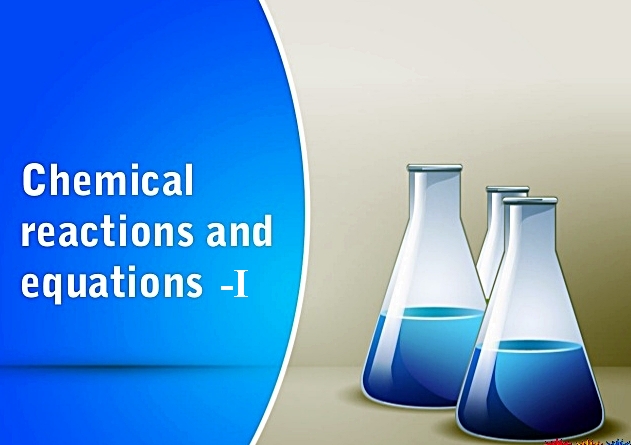Matter in Our Surroundings-II
Basis of Classification of
Matter:
- Based
upon particle arrangement
- Based
upon energy of particles
- Based
upon distance between particles
|
Solid
|
Liquid
|
Gas
|
|
Constituent particles are very closely packed.
|
Constituent particles are less closely packed.
|
Constituent particles are far apart from each
other.
|
|
Force of attraction between particles is very
strong.
|
Force of attraction between particles is less
strong.
|
Force of attraction between particles is
negligible.
|
|
Force of attraction between particles is very
strong.
|
Kinetic energy between particles is more than
that in solids.
|
Particles have maximum kinetic energy.
|
|
Have definite shape and volume.
|
Do not have definite shape but definite volume.
|
Neither have definite shape nor definite volume.
|
|
Have high density and cannot be diffused.
|
Density is lower than solids and can diffuse.
|
Density is least and can easily diffuse.
|
|
Incompressible.
|
Almost incompressible.
|
Highly compressible.
|
Rigidity:
It is the state in which
the particles of a substance are fixed in their positions.
Density: It is the packing of the constituent particles, in a
given volume of the substance. It can also be defined as the mass per unit
volume of a substance. It is expressed in kg/m3.
Fluidity:
It is the property by
virtue of which, the particles of a molecule move in space. It is the ability
of a substance to flow, for example, liquid and gases.
Kinetic
Energy: The energy possessed by a
body due to its movement or motion.
Compressibility:
It is a property by which
the volume of a substance can be reduced, or a substance can be made compact,
by applying a force of pressure.
Change of State of Matter:
Physical states of matter can be interconverted into each other by following two ways:
1. By changing the temperature
2. By changing the pressure
1. Effect of Change of
Temperature:
a)
Solid to liquid:
- On
increasing the temperature of solids, the kinetic energy of the particles
increases which overcomes the forces of attraction between the particles
thereby solid gets converted to a liquid.
- Melting:
Change of solid state of a substance into liquid is called melting.
- Melting
point: The temperature at which a solid melts to
become a liquid at the atmospheric pressure is called its melting point.
b)
Liquid to gas:
- On
heating a liquid like water, the kinetic energy of its particles increases
as high as in a gas, thus causing the liquid to change to a gas.
- Boiling: The
change of a liquid substance into gas on heating is called boiling.
- Boiling
point: The temperature at which a liquid boils and
changes rapidly into a gas at the atmospheric pressure is called
its boiling point.
c)
Gas to liquid:
- On
cooling a gas like steam (or water vapour), the kinetic energy of its
particles is lowered down, causing them to move slowly and bringing them
closer, forming a liquid.
- Condensation:
The process, in which a gas, on cooling, turns
into a liquid at a specific temperature is called condensation or
liquefaction.
d)
Liquid to solid:
- When
a liquid is cooled down by lowering its temperature, its particles lose
the kinetic energy and come to a stationary position, causing the liquid
to turn to solid.
- Freezing: The
change of a liquid substance into solid by lowering its temperature is
called freezing.
- Freezing
point: The temperature at which the state of a
substance changes from a liquid to a solid is called the freezing
point of that substance.
Fusion: The
process of melting, that is, change of solid state into liquid state is also
known as fusion.
Latent heat: The heat
energy that is required to change the state of a substance without causing any
ruse in the temperature of the substance is called latent heat. Since, the heat
energy is hidden in the bulk of the matter, it is called latent heat.
- Latent
heat of fusion: The heat energy required
to convert 1 kilogram of a solid into liquid at atmospheric pressure, at
its melting point, is known as the latent heat of fusion
- Latent
heat of vaporization: The heat energy required to
convert 1 kilogram of liquid into gas, at atmospheric pressure, at its
boiling point, is known as the latent heat of vaporization.
Sublimation: The
change of state of a substance directly from a solid to gas or gas to solid,
without changing into the liquid state, is called sublimation.
2. Effect of change of pressure
- Gas
to liquid: Gases can be liquefied by applying pressure
and reducing the temperature. When a high pressure is applied to a gas, it
gets compressed and if the temperature is lowered, the gas is liquefied.
- Solid CO2 gets converted directly to gaseous state on decrease of pressure to 1 atmosphere without coming into liquid state. This is the reason that solid carbon dioxide is also known as dry ice.










0 Comments